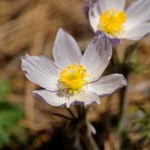What is Overtourism and What Can We Do About It?
Recently, there has been growing mention in the social media about "Overtourism" and its negative consequences.
First, I want to say that I have never heard this word
before, so I am not sure what it means. So, looked it up on the internet and
found a few references to it. Even this:
So, as there has been since the 1950s actually, when in the
U.S., the Christian Science Monitor (a newspaper) published a series of
articles about how American national were being “loved to death” there is
continuing concern about the quantity of tourism, as there should be, for
reasons I will describe. (I have to note that 60 years later the parks are
still here, and have not died.)
So a bit of background first. I have just returned from
visiting Yellowstone (one of the overtourists, I believe I am ) with my family and which has been cited as one of the places receiving such high amounts of visitation that we should be concerned.
This happened during the absolutely most visited period of time (last part of July first part of August). There were
probably over 30,000 visitors in the park during those days. And yes, the park
was congested. At one point, we experienced a “bison jam”, cars stopped on the
road because of a heard of bison, that was perhaps 2 km long. Now there were
two reasons for the cars being stopped. First, there were occasionally bison
blocking the road, and between a car and a bison, the bison wins. Second,
people stopped their cars on the road to photograph the bison. Now this latter
reason was most likely the cause of the bison jam, that is, not the number of
cars, but rather the people driving the cars, in disregard of an infinite
number of messages from the National Park Service to not stop the car on the
road. So, the bison jam was a function of behavior more so than numbers of
cars. So was there “too much tourism?”
The answer is “I don’t know”.
Some more background. I have been studying and working with
protected area managers on visitor management and tourism issues for about 50
years, yes, 50 years. I started my graduate studies focusing on issues of
biophysical impacts and then moved on to social science side of things, because
it became clear to me that side of management was very challenging, thorny, if
you will, and hardly any one paid any attention to visitors, except to complain
there were too many. Even then.
I have visited Yellowstone many times since 1970, 5 times in
the last year. Some trips were for business, others for holiday (I am very
fortunate, I live 400 km from Yellowstone). But even on holidays, visiting
Yellowstone required some thinking about what was happening.
Part of the challenge we have in addressing the question of
visitation management is its complexity, part of the problem is that the
problem has often been caused by solutions implemented in the past, and part of
the problem is that we have ignored tourism and visitation management in our
conservation programs. That may sound harsh to many of you. But the reality is
that we devote few resources to designing public use plans, fewer to
implementing them, and fewer still to building managerial capacity. The latter
several of us wrote about in 2012 in the December issue of Parks.
For example, how many general management plans devote more
than a few pages to managing tourism and visitation? How many have developed a
vision of what public use should look like? How many have standards of
acceptable change? How many have defined what a good visitor experience would
be? How many monitor those experiences?
If we don’t ask these questions, we cannot answer the
question if there is too much tourism, at least as professionals.
I will conclude now, but will write again shortly on how we
can better frame the opportunity we have in managing visitation and tourism.
Steve





No comments:
Post a Comment